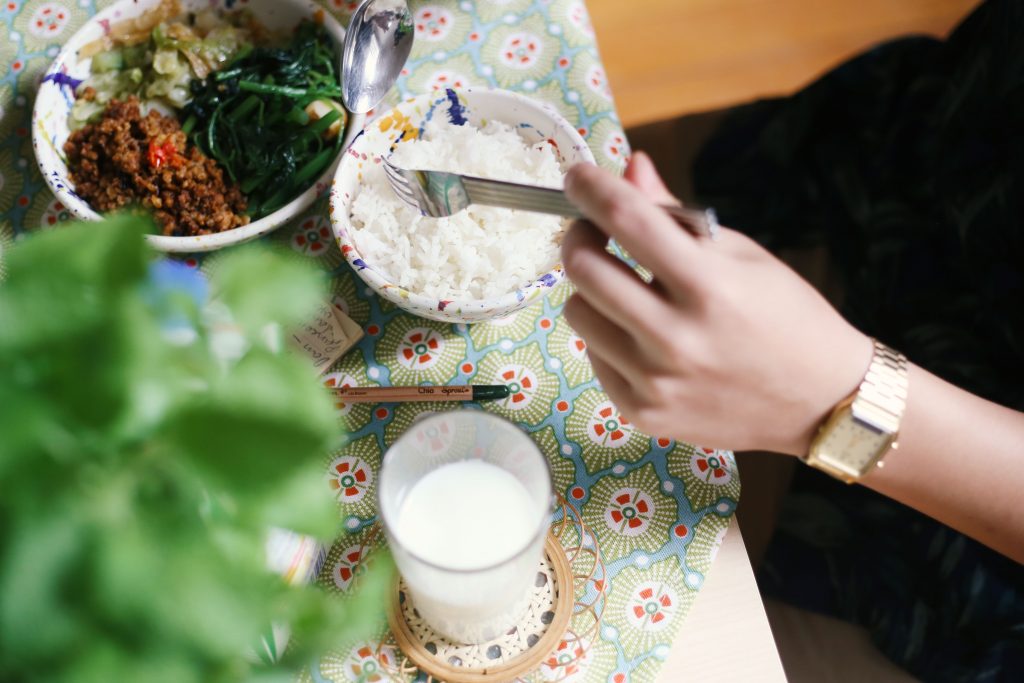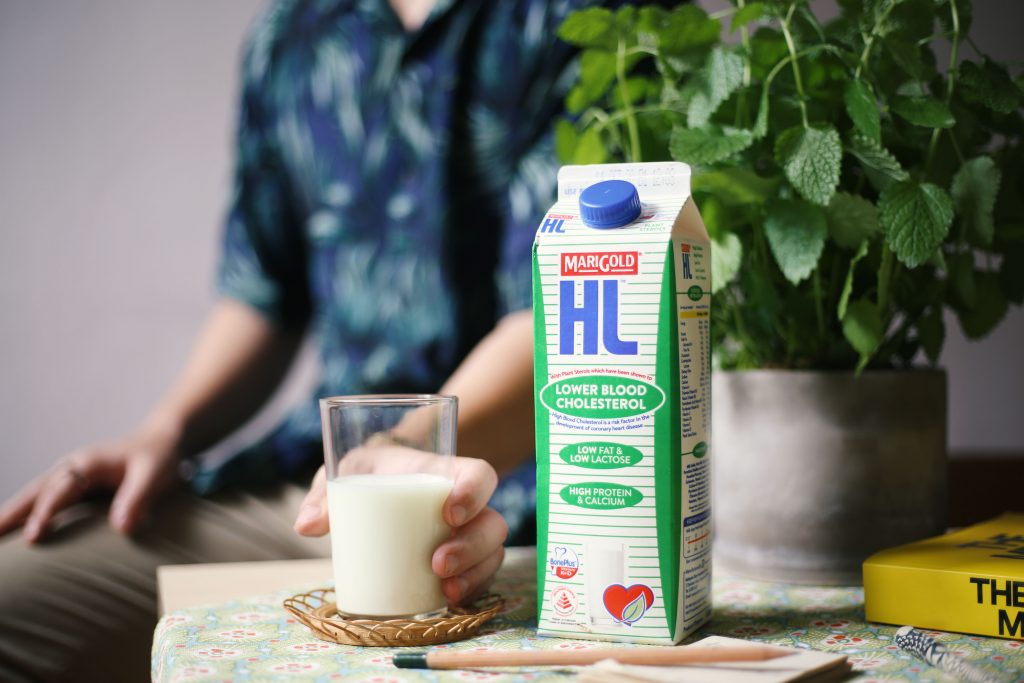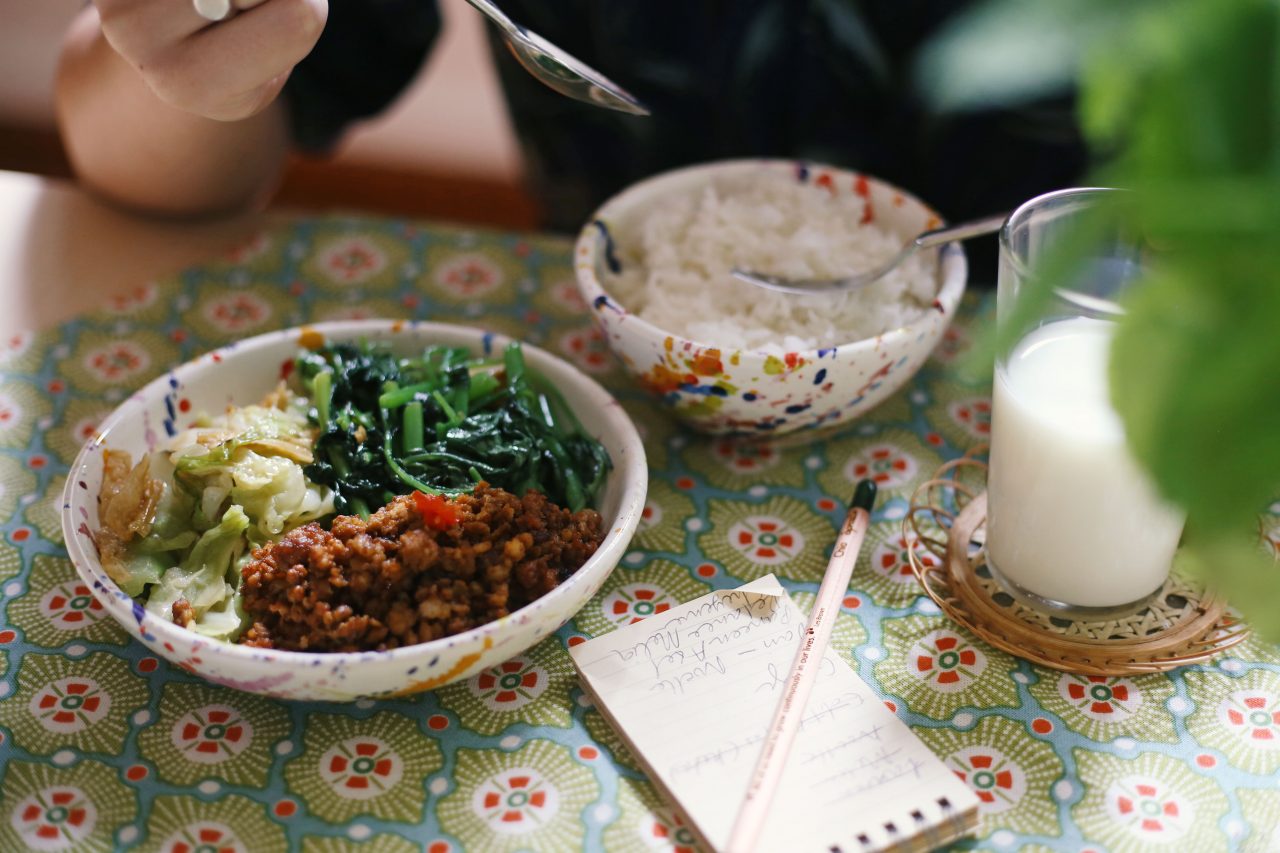This rise in the number of global health experts corresponds with a growing number of fads preaching virulent strains of diet-as-religion. This all-or-nothing approach, where people are encouraged to do a complete 180 degree lifestyle change is not only impractical, but also counterproductive.
Contemporary food movements that demand total commitment also fail to take into account the realities the average family faces—like budgetary constraints. On top of this, planning a balanced and nutritious meal takes time, a luxury most working families simply can’t afford.
While health is determined by a host of factors such as genetics, smoking, and lack of exercise, diet plays a huge role as well. Poor dietary habits can lead to various health issues like heart disease, hypertension and high cholesterol. According to the latest National Health Survey, 1 in 2 Singaporean adults has borderline-high to high blood cholesterol, increasing their risk of coronary heart disease.
Clearly, promoting heart health remains a priority in Singapore, as the risks of cardiovascular diseases such as stroke or heart attacks become more acute as we grow older, and further exacerbated by the foods we eat. Obesity in Singapore is a mere symptom of our overconsumption of processed carbs and foods that contain high amounts of saturated fats, like deep fried foods and red meat.
And as our economy heads into a protracted downturn, Singaporeans are increasingly looking for affordable and healthy dietary options to avoid these long term health hazards, diets that are actually compatible with their time-crunched lifestyles.

In this climate, cai fan, or economic rice, is having a moment as one of the more affordable and versatile meal options in Singapore.
Cai fan, and its Malay equivalent nasi padang, is the great equalizer. A one meat, two veg meal will set you back S$3.00-S$3.50—great value for the office worker on a budget and the broke university student. While it hasn’t been immune to inflation, the price point remains accessible to the majority of Singaporeans.
But for the time-scarce Singaporean, is it possible to survive on a cai fan alone? And if so, is it a good idea for our bodies?
I asked Fiona Chia, Managing Director and Founder of Health Can Be Fun, a public health consultancy that conducts talks on diet and nutrition. Fiona also served as a personal nutritionist for celebrities such as Taiwanese singer Angela Chang.
Faced with my endless questions on cai fan, Fiona had a surprising answer:
“Actually, the one meat, two veg option at cai fan stalls is one of the healthier meals you can get at a hawker centre,” says Fiona. “But I think Singaporeans should be more selective about the stall they eat at and the types of dishes they choose.”
For a healthier cai fan, Fiona looks for stalls with good hygiene and food that’s well lit under strong heat lamps. She also asks the owners whether they prepare their produce fresh every morning, as opposed to buying vegetables pre-cut. Unlike frozen veggies, which retain most of their nutritional value, pre-cut vegetables lose most of their nutrients before they make it to our plates.
As for sweet and sour fish vs. pork in mala sauce, what you choose to eat is less important than eating the right portion of carbs, protein, and vegetables.
“Ideally, you’d want to avoid the deep-fried foods, which if we overindulge, can lead to long term issues like high blood cholesterol and coronary heart disease,” Fiona explains. “My personal choice for a balanced cai fan meal would be a lean chicken or fish, at least one leafy green vegetable, and one other non-meat side. I’d also reduce the serving of rice.”
According to Fiona, the standard helping of white rice served at most cai fan stalls is at least 25% more than most people need. For a physically active person, the normal portion would be okay. But for the sedentary office worker, jia fan (add rice) is not a friend to our waistlines.

Cai fan is perhaps emblematic of a bigger issue: the Singaporean overconsumption of cheap processed carbs like rice and noodles, leading to a lack of dietary fiber and other associated health risks, including weight gain and its associated heart and high cholesterol risks.
“Part of my work with our clients is helping them navigate between the foods they eat and human psychology,” says Fiona.
Based on the past eight years of client work, Fiona has become more skeptical of the conventional wisdom like ‘eat less to lose weight’ or ‘eat more vegetables to stay healthy.’
“That advice is technically correct, but it ignores how human beings behave,” she explains. “If eating less causes us to binge eat in the long run, that’s counterproductive. Same goes for forcing ourselves to eat vegetables we hate.”
She recounts a story of a client who for years, tried to scale back the amount of food he ate, which always ended up backfiring, leading to periods of overeating. His obesity has led to other health issues including increased risk for heart disease, hypertension and an elevated blood cholesterol level due to the overconsumption of unhealthy fats that are most commonly found in fried foods.
To correct for this behaviour, Fiona simply requested that he drink 2-3 liters of water daily, and changed the portion of carbs, protein and vegetables he ate—without reducing the overall amount of food. This small tweak led him to lose 9 kilograms within three months. More importantly, it was a diet plan that he enjoyed and could stick to.
When I rattled off a list of sweets and junk food, Fiona was surprisingly relaxed about indulging in moderation. As the name of her firm Health Can Be Fun suggests, taking pleasure in the foods we eat and adopting a healthy attitude toward food can be a positive driving force to better eating habits.

The Best Diet Is the One You Can Stick To
According to Fiona, a balanced Singaporean meal should consist of the following:
1. A quarter plate of carbs (up the amount of carbs for those who are physically active)
2. A quarter plate of protein
3. Half a plate of veggies
4. Choice of dairy or probiotic
Finally, drink 2-3 liters of water daily and avoid deep-fried foods which contain unhealthy fats and highly processed foods like instant noodles, both of which lead to long term health problems like heart issues and high blood cholesterol.
Beyond this, Singaporeans can also consider adding plant sterols to foods that they already consume. Plant sterols have been proven to lower blood cholesterol by blocking the absorption of bad cholesterol into the bloodstream. Foods that are rich in plant sterols include vegetables like broccoli and corn, and nuts like almonds, pistachios and pecans. However, the amount naturally present in food is too low to meet our daily needs.
Medical professionals suggest that it is beneficial to consume 1-3 grams of plant sterols daily.
Australians put plant sterols in butter and margarine, which studies have shown can help to lower blood cholesterol. Contrary to popular belief, eating foods that contain dietary cholesterol like eggs or drinking low-fat dairy doesn’t impact our blood cholesterol, which is dependent on the saturated and trans-fats we consume.
For Singaporeans who already have the habit of drinking milk, the plant sterols that are contained in MARIGOLD HL Milk with Plant Sterols have been shown to lower blood cholesterol.
Given the constraints on Singaporean families in this recession (time and money), small adjustments like these are more sustainable than huge lifestyle changes and all-or-nothing dietary fads.
Instead of eating less, change the proportion of food you eat, and incorporate healthier alternatives to things you already consume. This will go a long way to staving off long term health problems.

A low-fat milk fortified with plant sterols, MARIGOLD HL Milk with Plant Sterols is a convenient way to keep your cholesterol level in check. Each glass of MARIGOLD HL Milk with Plant Sterols contains 0.65g of plant sterols. Drinking 2 glasses of MARIGOLD HL Milk with plant sterols will provide 1.3g of plant sterols, which helps reduce your blood cholesterol levels while at the same time fulfilling your Protein, Calcium and Vitamins requirements.






